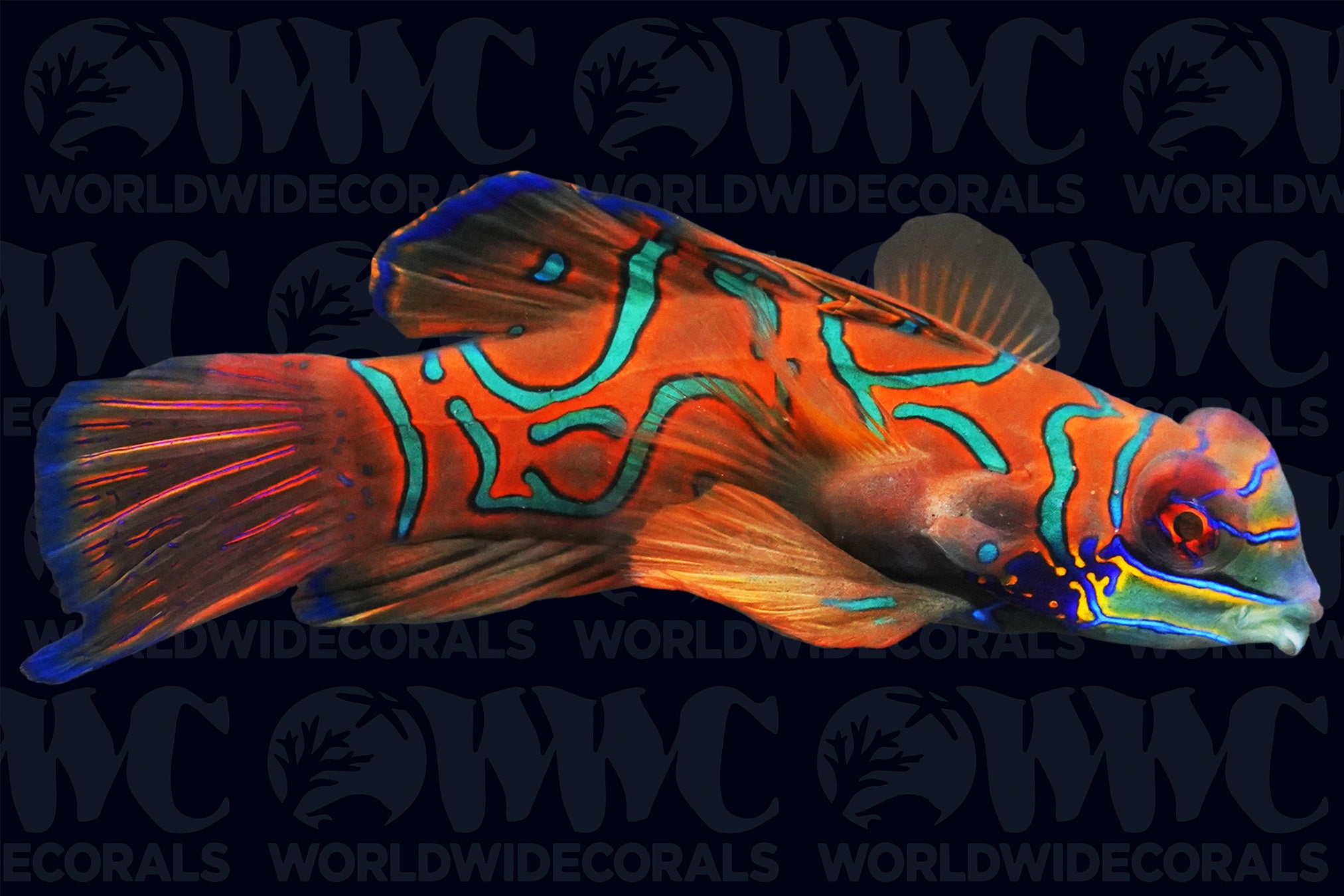Description
Synchiropus splendidus
Red Mandarins are uniquely colored and have very interesting behavior. Provide an environment where there is a lot rockwork to provide areas for the Mandarin to hide and where Copepods can grow naturally. Housing them in small aquariums will help keep the density of food higher. These fish eat very slowly and can be out competed for food if kept in densely populated aquariums. It typically takes time and patience to get Mandarins to eat frozen or pelletized foods, so do not get discouraged if they do not take to those foods right away. Males (which are the most spectacularly colored with an elongated dorsal spine) are very territorial with other males, whereas females can be kept together (or together with one male) with little problem. The Red Mandarin will grow to be 3” in size, sport red maze patterns with red pectoral fins. They are found in the Western Pacific inhabiting shallow protected lagoons and inshore reefs.
Red Mandarins are uniquely colored and have very interesting behavior. Provide an environment where there is a lot rockwork to provide areas for the Mandarin to hide and where Copepods can grow naturally. Housing them in small aquariums will help keep the density of food higher. These fish eat very slowly and can be out competed for food if kept in densely populated aquariums. It typically takes time and patience to get Mandarins to eat frozen or pelletized foods, so do not get discouraged if they do not take to those foods right away. Males (which are the most spectacularly colored with an elongated dorsal spine) are very territorial with other males, whereas females can be kept together (or together with one male) with little problem. The Red Mandarin will grow to be 3” in size, sport red maze patterns with red pectoral fins. They are found in the Western Pacific inhabiting shallow protected lagoons and inshore reefs.
3 DAY GUARANTEE | Hassle Free | 100% Satisfaction | Online Orders Only


